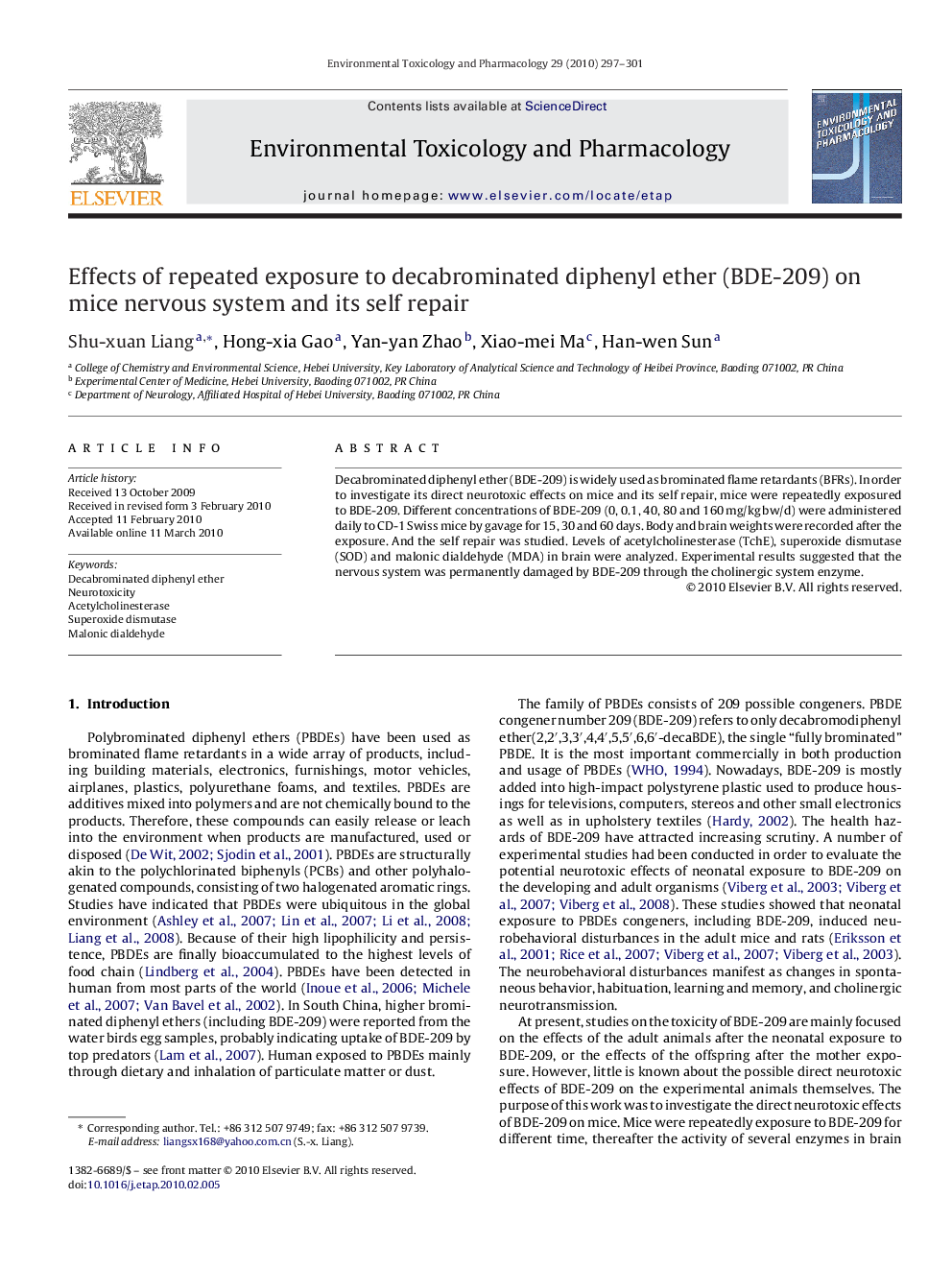| Article ID | Journal | Published Year | Pages | File Type |
|---|---|---|---|---|
| 2583545 | Environmental Toxicology and Pharmacology | 2010 | 5 Pages |
Abstract
Decabrominated diphenyl ether (BDE-209) is widely used as brominated flame retardants (BFRs). In order to investigate its direct neurotoxic effects on mice and its self repair, mice were repeatedly exposured to BDE-209. Different concentrations of BDE-209 (0, 0.1, 40, 80 and 160 mg/kg bw/d) were administered daily to CD-1 Swiss mice by gavage for 15, 30 and 60 days. Body and brain weights were recorded after the exposure. And the self repair was studied. Levels of acetylcholinesterase (TchE), superoxide dismutase (SOD) and malonic dialdehyde (MDA) in brain were analyzed. Experimental results suggested that the nervous system was permanently damaged by BDE-209 through the cholinergic system enzyme.
Keywords
Related Topics
Life Sciences
Environmental Science
Health, Toxicology and Mutagenesis
Authors
Shu-xuan Liang, Hong-xia Gao, Yan-yan Zhao, Xiao-mei Ma, Han-wen Sun,
